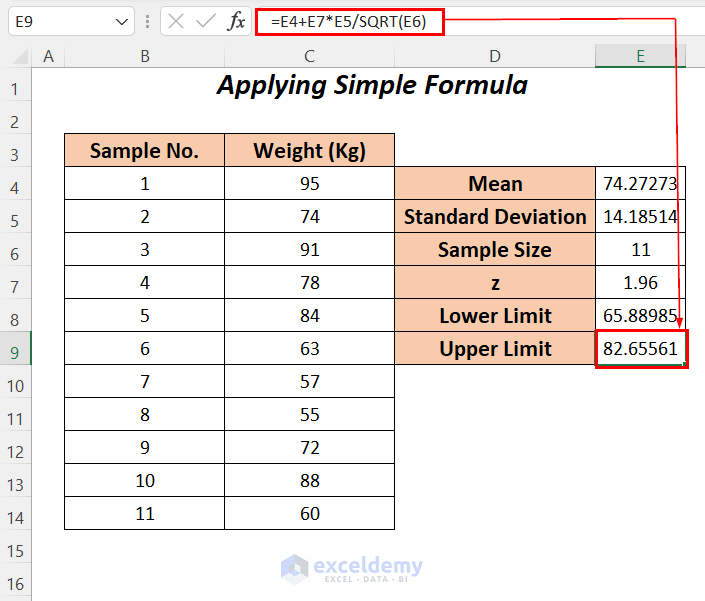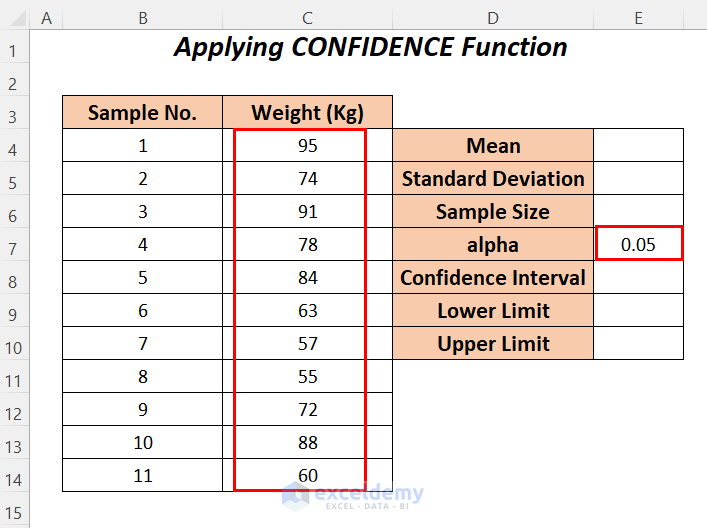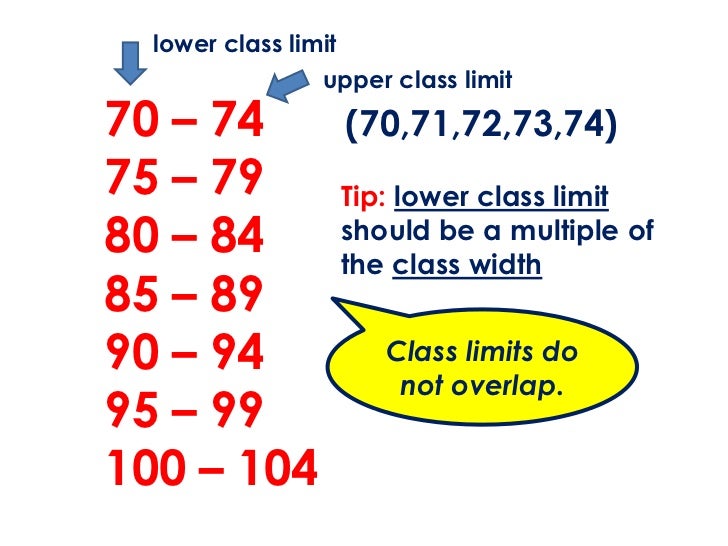Lower Limit In Statistics
Lower Limit In Statistics - The lower limit for every class is the smallest value in that class. Organize the data points in ascending order. To calculate upper and lower limits for a dataset: Determine the lowest value (lower limit). More precisely, a confidence limit is a range of values,. On the other hand, the upper limit for every class is the greatest value in that class. The largest data value that can belong to a class. It represents limits between which you expect to find a particular measurement or statistic. The smallest data value that can belong to a class.
The smallest data value that can belong to a class. More precisely, a confidence limit is a range of values,. The lower limit for every class is the smallest value in that class. On the other hand, the upper limit for every class is the greatest value in that class. It represents limits between which you expect to find a particular measurement or statistic. Determine the lowest value (lower limit). To calculate upper and lower limits for a dataset: The largest data value that can belong to a class. Organize the data points in ascending order.
The largest data value that can belong to a class. It represents limits between which you expect to find a particular measurement or statistic. The lower limit for every class is the smallest value in that class. The smallest data value that can belong to a class. Organize the data points in ascending order. On the other hand, the upper limit for every class is the greatest value in that class. Determine the lowest value (lower limit). More precisely, a confidence limit is a range of values,. To calculate upper and lower limits for a dataset:
[Class 10 MCQ] For the distribution, sum of lower limits of median
The lower limit for every class is the smallest value in that class. Organize the data points in ascending order. On the other hand, the upper limit for every class is the greatest value in that class. More precisely, a confidence limit is a range of values,. The largest data value that can belong to a class.
How to Find Upper and Lower Limits of Confidence Interval in Excel
Determine the lowest value (lower limit). Organize the data points in ascending order. The smallest data value that can belong to a class. It represents limits between which you expect to find a particular measurement or statistic. On the other hand, the upper limit for every class is the greatest value in that class.
SOLVED 1. ¿Qué son y para qué sirven los intervalos y límites de
The smallest data value that can belong to a class. The largest data value that can belong to a class. Organize the data points in ascending order. The lower limit for every class is the smallest value in that class. Determine the lowest value (lower limit).
What Is Lower Limit In Statistics
The largest data value that can belong to a class. On the other hand, the upper limit for every class is the greatest value in that class. To calculate upper and lower limits for a dataset: More precisely, a confidence limit is a range of values,. Determine the lowest value (lower limit).
How To Find Upper Limit? New
To calculate upper and lower limits for a dataset: Determine the lowest value (lower limit). It represents limits between which you expect to find a particular measurement or statistic. The lower limit for every class is the smallest value in that class. On the other hand, the upper limit for every class is the greatest value in that class.
How to Find Upper and Lower Limits of Confidence Interval in Excel
Determine the lowest value (lower limit). More precisely, a confidence limit is a range of values,. The largest data value that can belong to a class. On the other hand, the upper limit for every class is the greatest value in that class. To calculate upper and lower limits for a dataset:
What Is Lower Limit In Statistics
More precisely, a confidence limit is a range of values,. Determine the lowest value (lower limit). Organize the data points in ascending order. To calculate upper and lower limits for a dataset: The largest data value that can belong to a class.
Upper & Lower Limit, Range, Class Width, Class Mark YouTube
On the other hand, the upper limit for every class is the greatest value in that class. More precisely, a confidence limit is a range of values,. The largest data value that can belong to a class. The lower limit for every class is the smallest value in that class. It represents limits between which you expect to find a.
How to Find Class Limits (With Examples)
The lower limit for every class is the smallest value in that class. Determine the lowest value (lower limit). To calculate upper and lower limits for a dataset: On the other hand, the upper limit for every class is the greatest value in that class. The largest data value that can belong to a class.
Statistics
The largest data value that can belong to a class. The lower limit for every class is the smallest value in that class. Determine the lowest value (lower limit). Organize the data points in ascending order. On the other hand, the upper limit for every class is the greatest value in that class.
More Precisely, A Confidence Limit Is A Range Of Values,.
The lower limit for every class is the smallest value in that class. Determine the lowest value (lower limit). On the other hand, the upper limit for every class is the greatest value in that class. The largest data value that can belong to a class.
Organize The Data Points In Ascending Order.
It represents limits between which you expect to find a particular measurement or statistic. The smallest data value that can belong to a class. To calculate upper and lower limits for a dataset:
![[Class 10 MCQ] For the distribution, sum of lower limits of median](https://d77da31580fbc8944c00-52b01ccbcfe56047120eec75d9cb2cbd.ssl.cf6.rackcdn.com/e73545e2-c988-43e0-a367-bd2eba3226a1/slide35.jpg)








